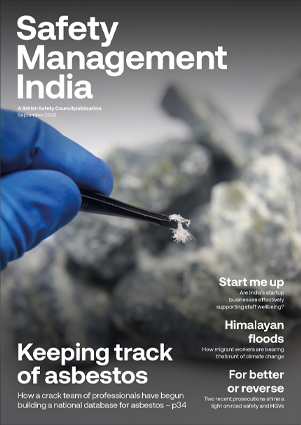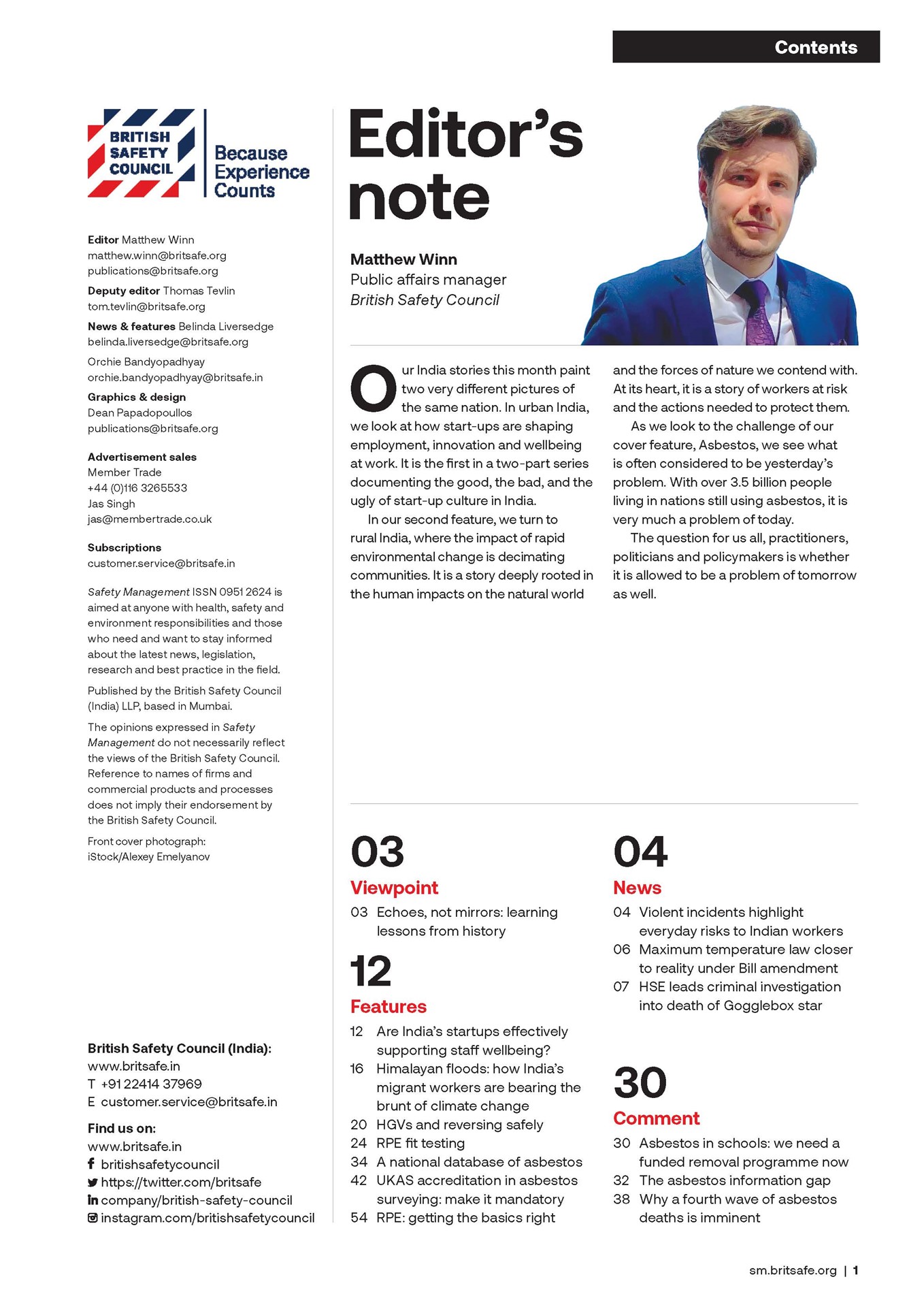The key ISO management standards setting out best practice frameworks for effectively managing occupational health and safety, environmental and quality risks and opportunities are undergoing major revision, so it’s essential businesses start planning now to meet the new requirements in order to maintain their certifications under the relevant standards.
Features
Changes to ISO management standards: start preparing now
As the range of global economic issues and social, environmental and governance challenges facing businesses continues to rapidly evolve, the International Organization for Standardization (ISO) is taking action to reflect developments in best practice, legislation and policy in these areas by drafting key updates to enhance its most widely used management system standards. Over the next two years, notable revisions are planned for the ISO 9001 (Quality Management), ISO 14001 (Environmental Management), and ISO 45001 (Occupational Health and Safety) standards.
The revised and updated ISO 14001:2015, ISO 9001:2015 and ISO 45001:2018 are due to be relaunched during 2026 and 2027. The revisions are part of ISO’s regular review cycle to ensure management standards remain relevant and address current business needs. If your organisation has been independently certified for compliance with any of these standards, and wishes to maintain that certification going forward, it is critical that you start planning now for the expected changes and new requirements.
 The revision of two of the standards – ISO 14001 and ISO 45001 – mainly stems from global environmental shifts; climate change and resource scarcity. Image: iStock
The revision of two of the standards – ISO 14001 and ISO 45001 – mainly stems from global environmental shifts; climate change and resource scarcity. Image: iStock
Also, if you are considering getting your business certified for compliance with one or
more of the standards, it makes sense to revise your quality, environment and OSH policies, systems and procedures in line with the expected changes as soon as possible, so you are prepared to comply with the updated standards when they are published.
What are the expected revisions and what benefits will they bring?
The revision of two of the standards – ISO 14001 and ISO 45001 – mainly stems from:
- Global environmental shifts: climate change, resource scarcity and circular economy demands have changed, and continue to evolve
- User feedback: a 2021 ISO survey revealed users wanted more support and clarity about the requirements of ISO 14001 and ISO 45001, not necessarily new requirements
- Alignment with other standards: the planned new ISO 14001:2026 and ISO 45001:2027 will harmonise with each other and with ISO 9001, ensuring consistency across management systems.
The key benefits of these updates are expected to be:
- Improved clarity: easier implementation and auditing
- Climate resilience: better preparedness for environmental disruptions
- Lifecycle accountability: stronger sustainability credentials
- Digital readiness: encouragement to use smart tools for monitoring and reporting.
IS0 14001:2026
ISO 14001 is the internationally recognised standard for environmental management systems (EMS), helping organisations of any size and sector to improve their environmental performance, comply with regulations and align with United Nations sustainability goals. The current version, ISO 14001:2015, has served as a robust framework for a decade and is now the world’s second most certified standard after ISO 9001.
However, with evolving environmental challenges and stakeholder expectations, the rising costs of resources (like raw materials, energy and waste management), and a broader desire among governments and business to ‘green’ the entire supply chain, a new revision – ISO 14001:2026 – is due to be published in January 2026. At its heart, the new standard promises enhanced clarity, climate responsiveness and lifecycle thinking.
 Reworded clauses with added notes and examples will make the standard more accessible, especially for small businesses. Photograph: iStock
Reworded clauses with added notes and examples will make the standard more accessible, especially for small businesses. Photograph: iStock
Key expected changes in ISO 14001:2026
1. Structural updates
- Annex SL alignment: the revised standard adopts ISO’s Harmonised Structure, improving compatibility with other ISO standards
- Clause renumbering: expect new clauses, such as 6.3 – Planning and Managing Change, and restructured sections for management review and continual improvement.
2. Climate change integration
- Clause 4 (‘Context of the Organisation’) will explicitly address climate-related risks and opportunities. To meet this clause, organisations will have to assess how climate change affects their operations and how they contribute to climate impact.
3. Lifecycle thinking
- The standard shifts from ‘considering’ to actively applying lifecycle perspectives when identifying environmental aspects. This includes the sourcing, production, use and end-of-life stages of products and services, either those produced or used by the business.
4. Enhanced risk management
- Clause 6.1 will be refined to clarify how to identify and manage environmental risks and opportunities, and there will be an emphasis on emergency preparedness and resilience planning.
5. Supply chain oversight
- Clause 8.1 will require organisations to control and influence externally provided processes with environmental relevance. This promotes responsible sourcing and supplier collaboration.
6. Clearer language and guidance
- Reworded clauses with added notes and examples will make the standard more accessible, especially for small businesses
- Annex A will offer expanded interpretive guidance on complex topics, such as operational control and change management.
7. Management review and improvement
- Clause 9.3 will be split into inputs and outputs, streamlining the review process
- Clause 10 on continual improvement will be simplified to reduce ambiguity.
ISO 9001:2026
ISO 9001:2026 is the upcoming revision of the world’s most popular quality management system standard, ISO 9001. The revision will likely include updates relating to risk management, sustainability, digitalisation and organisational knowledge.
Key expected changes in ISO 9001:2026
- Risk management
The updated version is expected to provide clearer guidance on risk-based thinking and how to address risks and opportunities. - Sustainability and ESG alignment
There are expected to be new requirements that align quality systems with environmental and social governance (ESG) principles, such as reducing waste and improving supply chain sustainability.
There is also likely be an increased emphasis on sustainability practices within quality management, aligning with the growing importance of environmental considerations. - Digitalisation
The revision will likely address the integration of digital tools and technologies into quality management systems, reflecting the increasing reliance on digital transformation. - Organisational knowledge
The standard will likely provide more guidance on how to manage and utilise organisational knowledge effectively. - Ethics and integrity
A greater emphasis on leadership accountability, ethics and organisational culture is anticipated as these are essential elements of quality management. - Supply chain management
The updated standard is expected to address changes in supply chain management. - Change management
The new version may offer guidance on managing changes within an organisation.
IS0 45001:2027
The update to the ISO 45001 occupational health and safety management system standard is still at an early stage compared to the revision of the ISO 14001 and ISO 9001 standards. Although the full scope of the proposed changes is not known at this stage, discussions among interested stakeholders suggest areas of focus could include:
- The impacts of climate change on workplace safety
- Greater emphasis on wellbeing and better alignment with another, related standard, ISO 45003:2021 – Psychological health and safety at work. Another related standard, ISO/CD 30441 Human Resource Management – Workplace Wellbeing – Guidelines for thriving workplaces – which will provide guidance on how organisations can develop and maintain organisational conditions and practices that support and promote workforce wellbeing, thereby contributing to human resources management outcomes and the strategic goals of the organisation – is also currently under development.
- Stronger support for a more diverse workforce.
Expected timeline and transition period
After the final publication of each updated standard there will be a three-year transition period, during which both the original ISO versions and the updated 2026/2027 versions will be valid.
Expected release dates:
- ISO 14001:2026 – January 2026
- ISO 9001:2026 – September 2026
- ISO 45001: 2027 – March 2027.
What you should do now
- Review preliminary drafts: familiarise yourself with the proposed changes
- Educate key personnel: train teams on the new clauses and terminology
- Update EMS documentation: to reflect the new structure and requirements
- Conduct gap analysis: identify areas needing improvement
- Plan certification transition: align audits with the new standard timeline.
Whether your business is a multinational or a small enterprise, preparing early will ensure a smooth transition to the new standards. This will apply whether the business is seeking to maintain its existing certification under one of the standards or achieve its first certification.
Businesses should also look out for the final, confirmed updates to the standards, as the expected changes listed in this article may be subject to change.
For more information, see:
iso.org
britsafe.org
Dr Keith Whitehead is Senior environmental, health and safety consultant at the British Safety Council. Connect with him on LinkedIn:
linkedin.com/in/dr-keith-whitehead-c-env-49715223/


FEATURES

Delhi’s air pollution problem leaves construction workers jobless and without pay
By Orchie Bandyopadhyay on 10 November 2025
Every autumn and winter, Delhi experiences terrible air pollution that places the health of its 40 million residents at grave risk. But government measures to alleviate the problem by temporarily closing construction sites mean hundreds of thousands of daily-wage labourers are being left without wages and a means of financial support.

India’s road rage crisis: how professional drivers are bearing the brunt
By Orchie Bandyopadhyay on 10 November 2025
High profile reports of violent attacks on people who drive for work purposes, like bus and delivery drivers, have shone a spotlight on the growing problem of road rage in India. Commentators say it is now time for the Government to step up prosecutions of those who act aggressively on the road, while educating drivers on stress management techniques, to tackle the problem.

